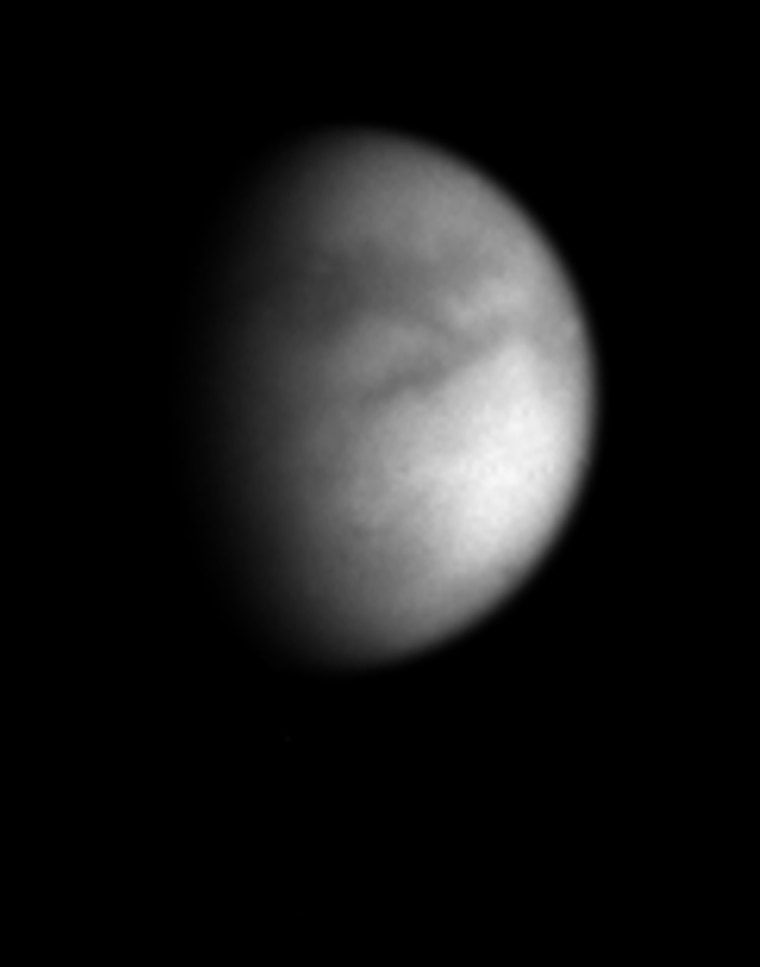NASA's Cassini spacecraft has sent back an image that appears to shows light and dark regions on the surface of Titan, Saturn's largest and most mysterious moon.
Scientists have not yet determined the composition of those regions, but they believe that Titan could contain chilly lakes or oceans of hydrocarbons.
After a seven-year cruise, the bus-sized Cassini probe is due to enter Saturnian orbit on July 1, and make its first flyby of Titan on July 2.
Titan is of particular interest to scientists for at least two reasons: It is the only moon in the solar system with an opaque atmosphere, and conditions on its surface are thought to be similar to those on Earth's surface at an early age.
The dense atmosphere makes it difficult to study the moon's surface. However, radar readings have turned up areas of varying reflectivity, which scientists speculate could represent wide reservoirs of methane and ethane.
The latest image from Cassini, released Friday, was taken through a polarizing filter that is designed to see through the hydrocarbon haze to Titan's surface. The view represents an improvement in resolution of nearly three times over Cassini's previous Titan images, according to the Cassini Imaging Central Laboratory for Operations at the Space Science Institute, based in Boulder, Colo.
The image was obtained on June 14 from a distance of 6.5 million miles (10.4 million kilometers), the laboratory said in its status report.
In December, Cassini is due to drop a piggyback probe named Huygens toward Titan. The Huygens spacecraft, designed by the European Space Agency, would enter Titan's atmosphere 22 days after its release, deploy three sets of parachutes, and collect data and imagery as it descends to Titan's surface.
